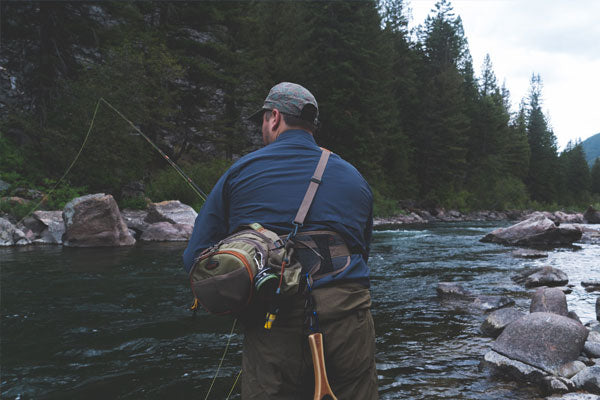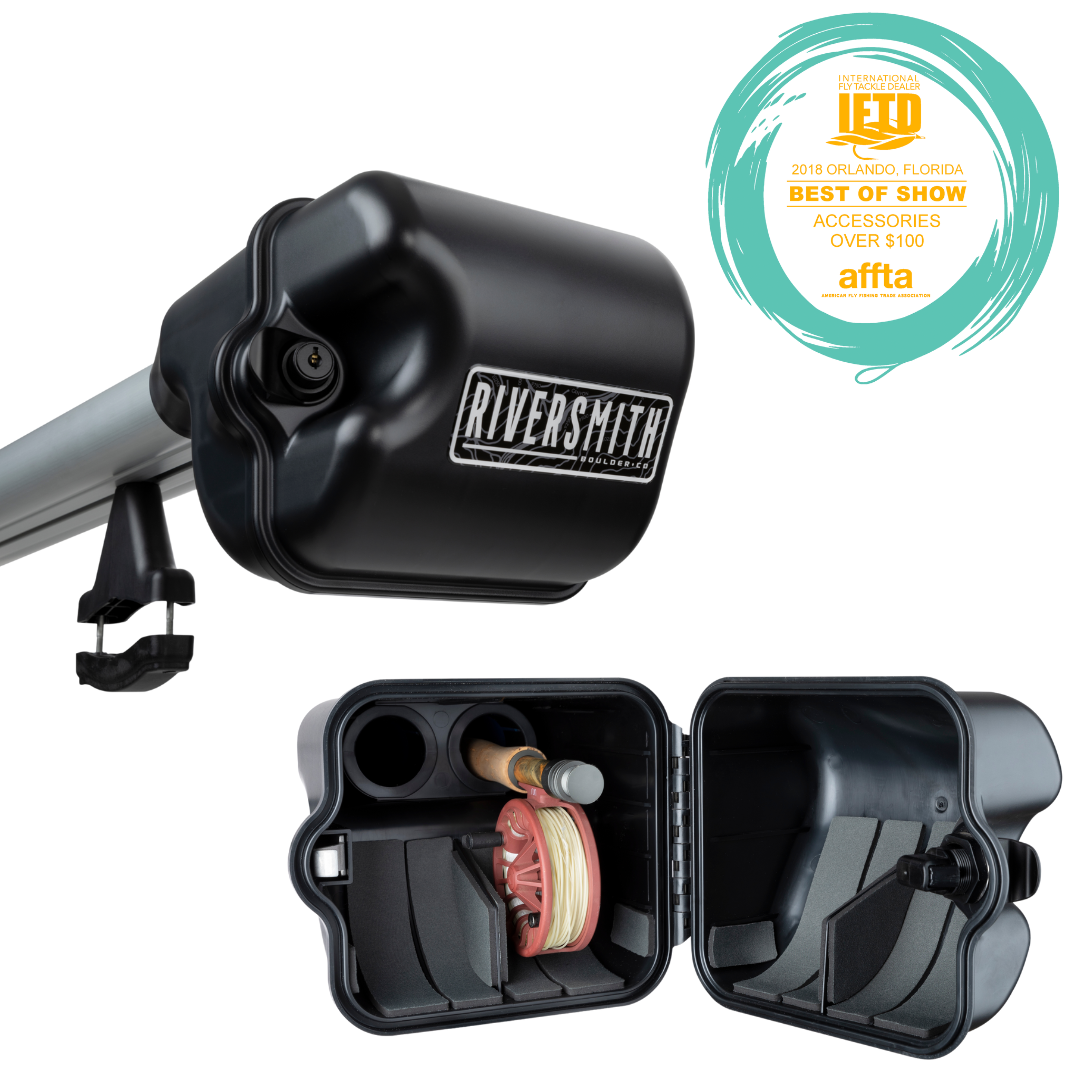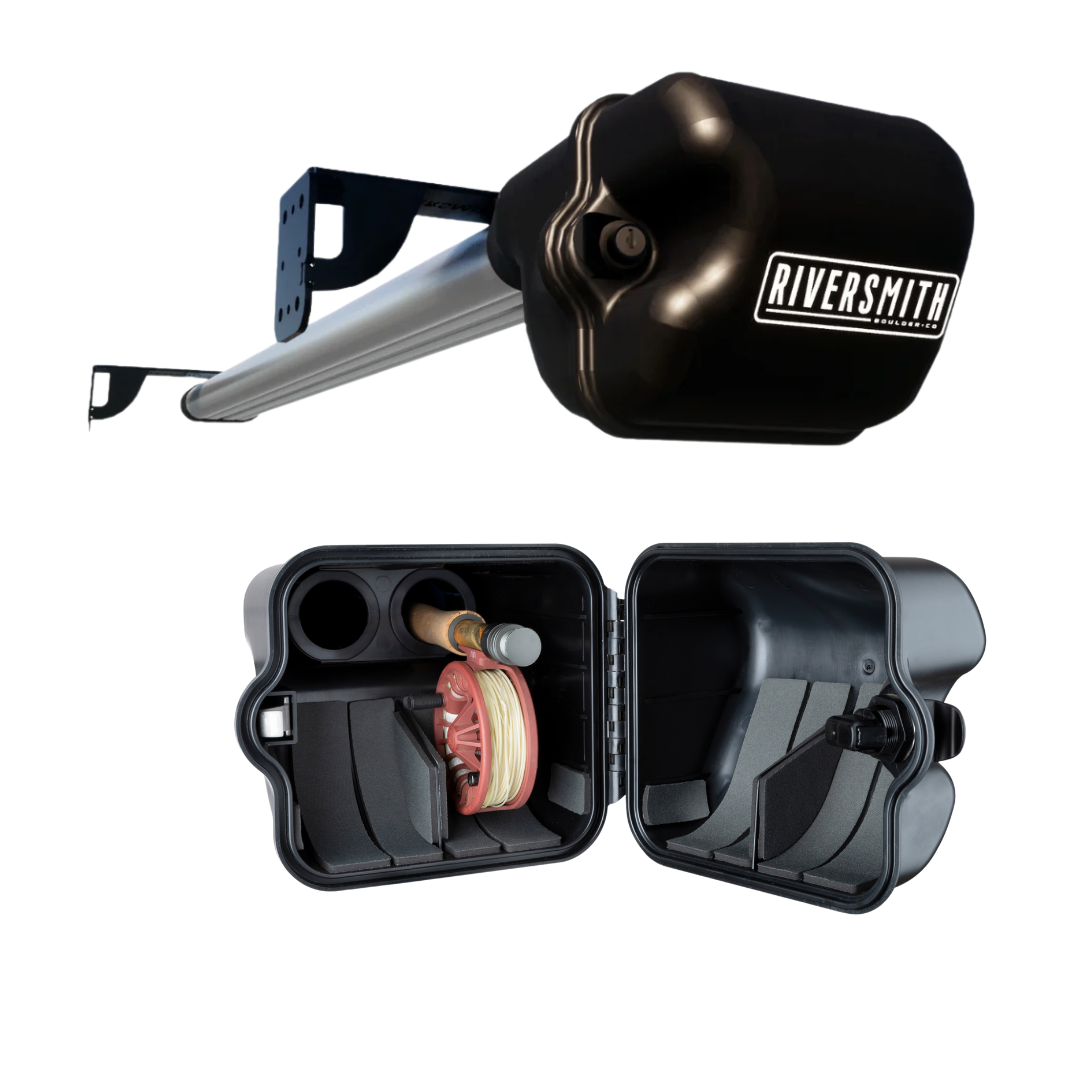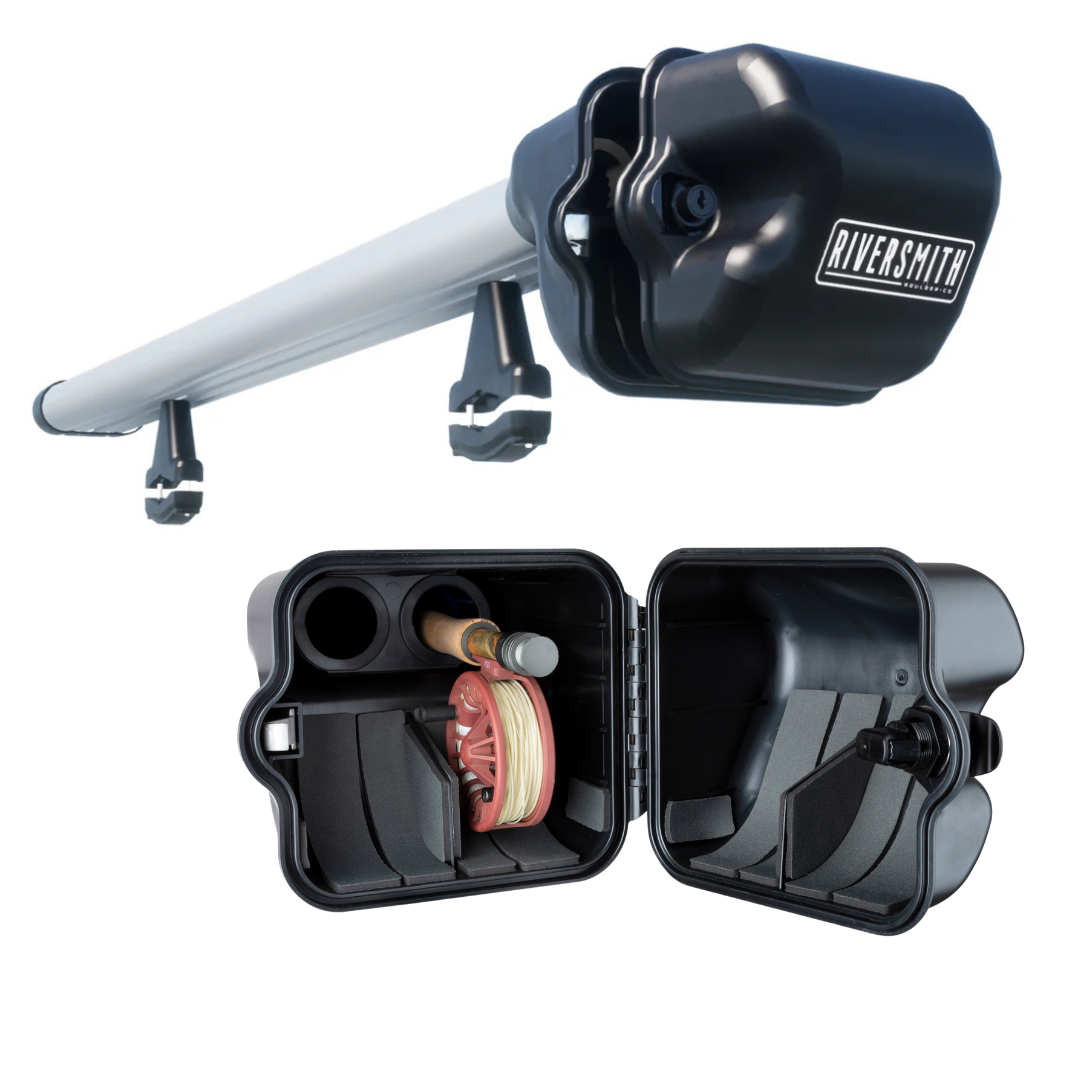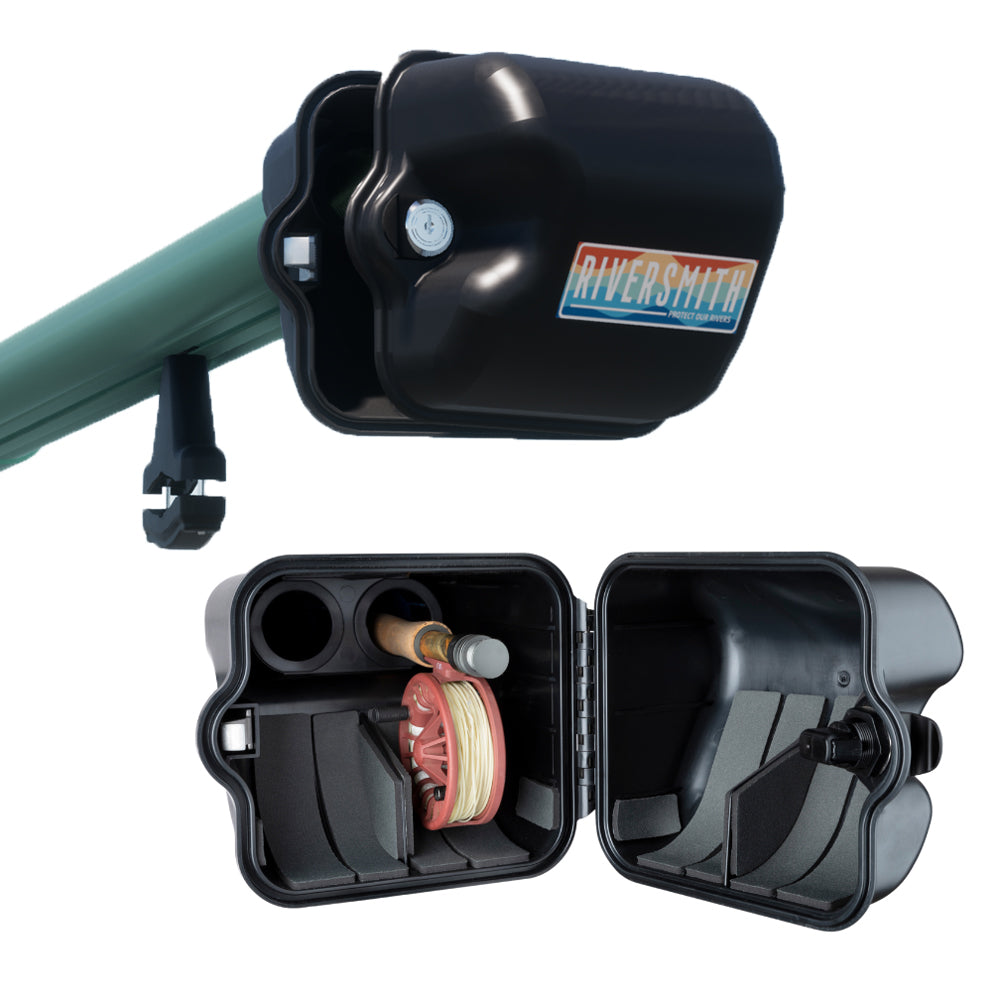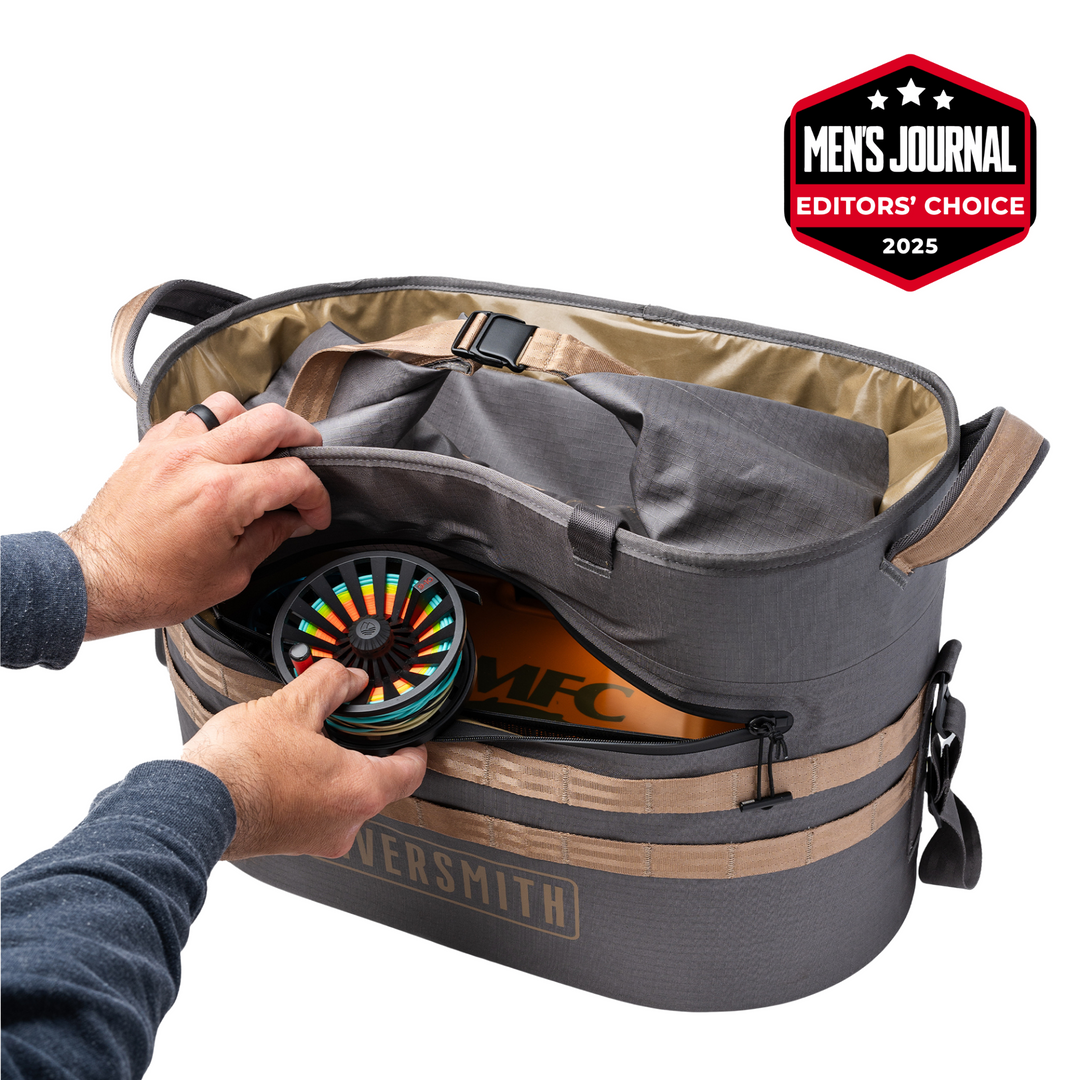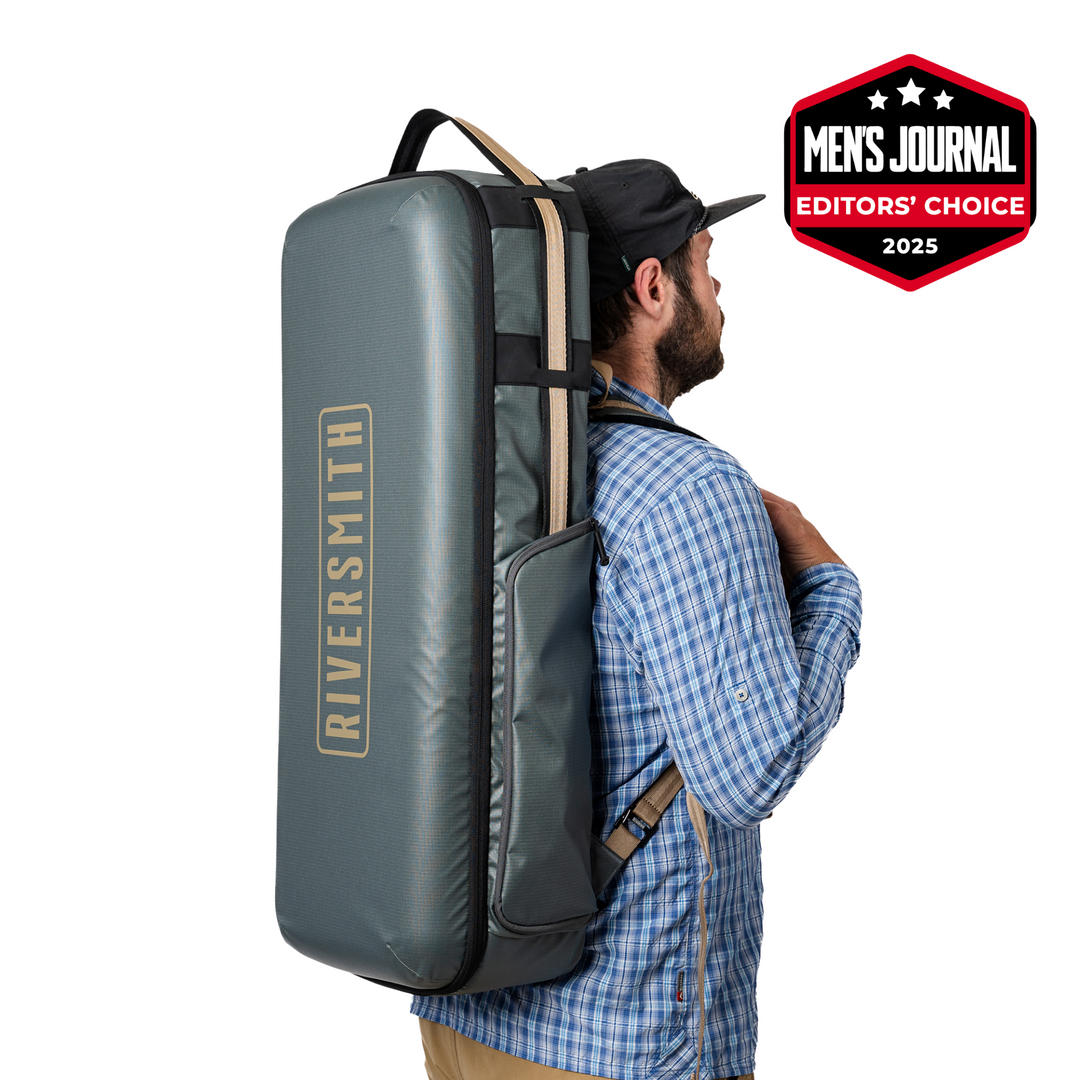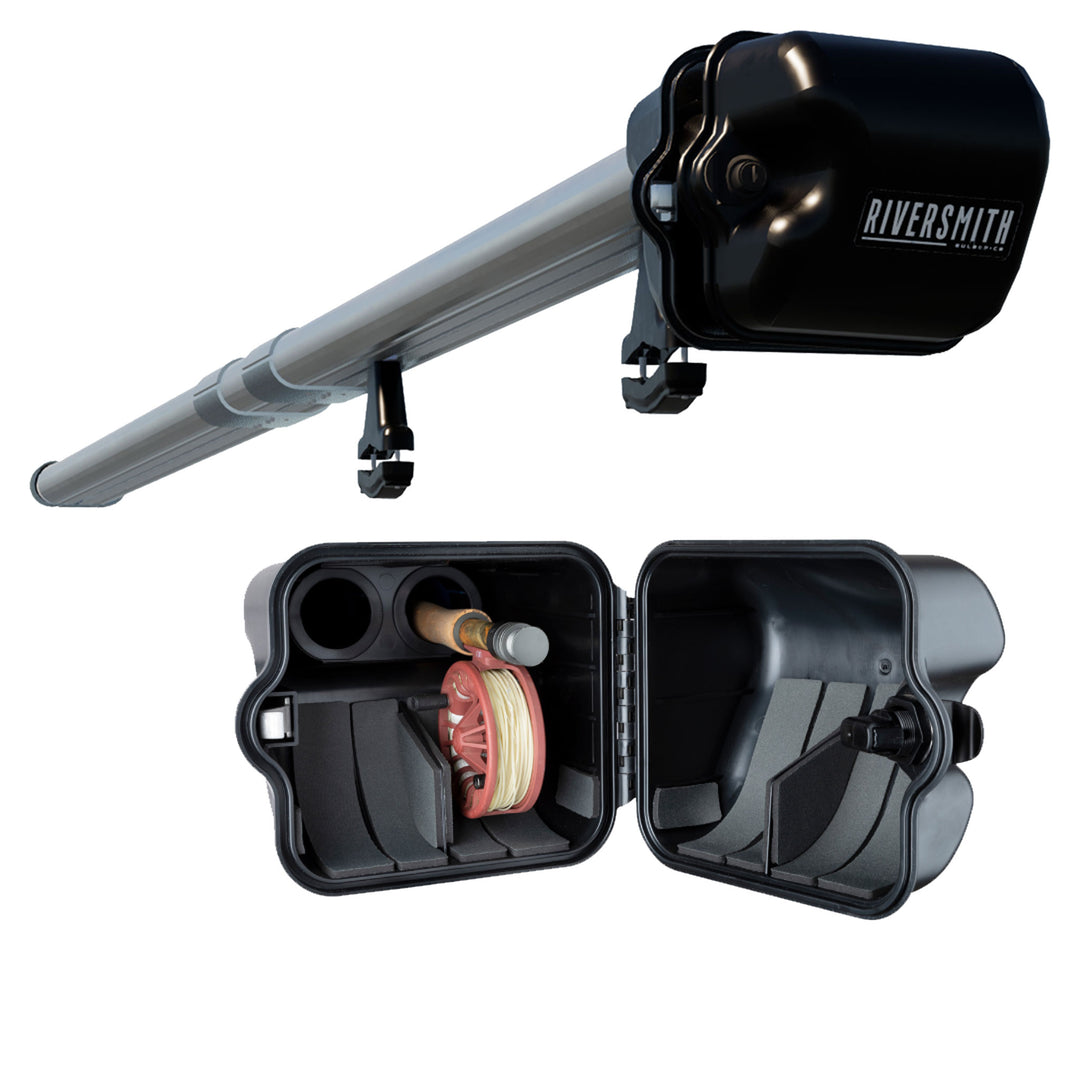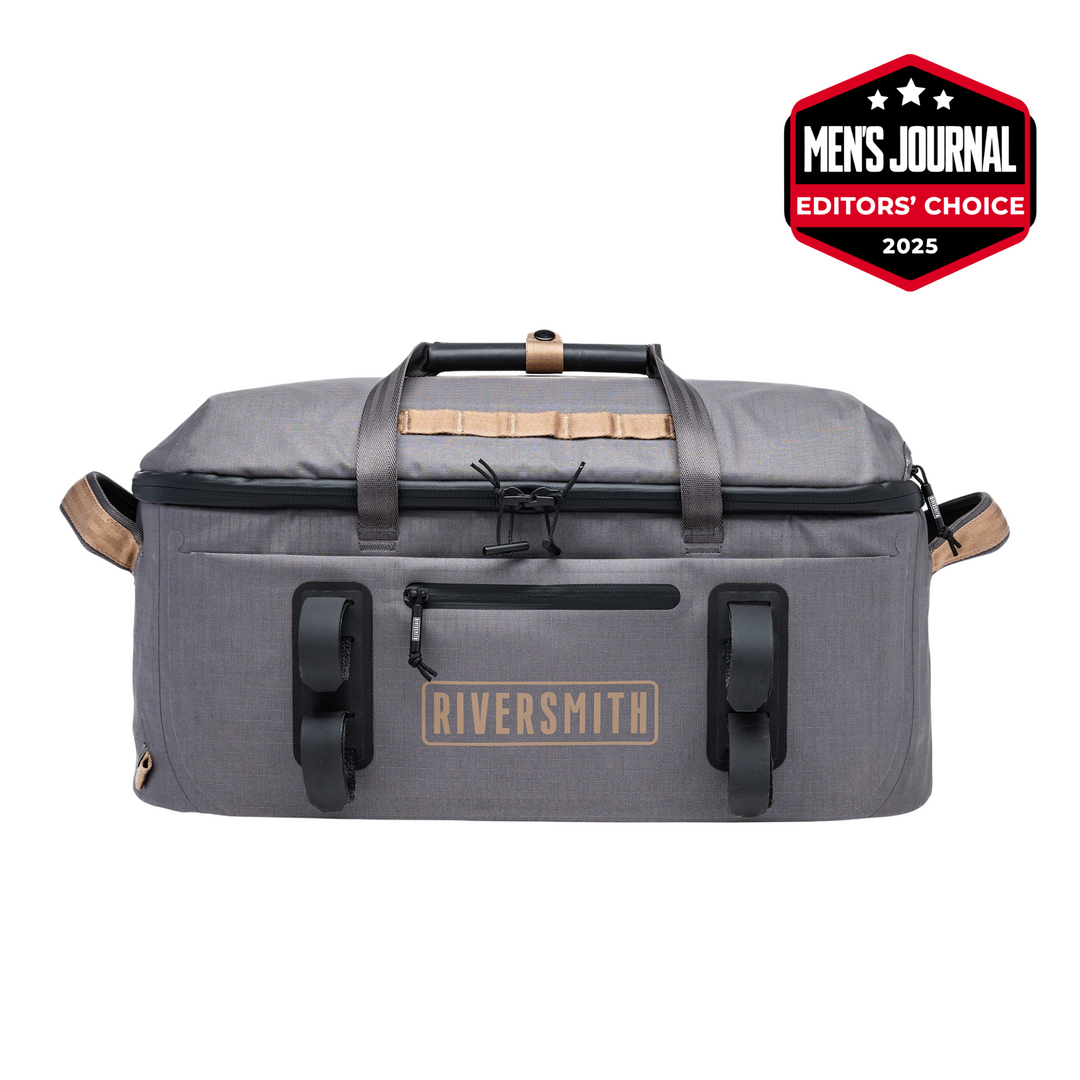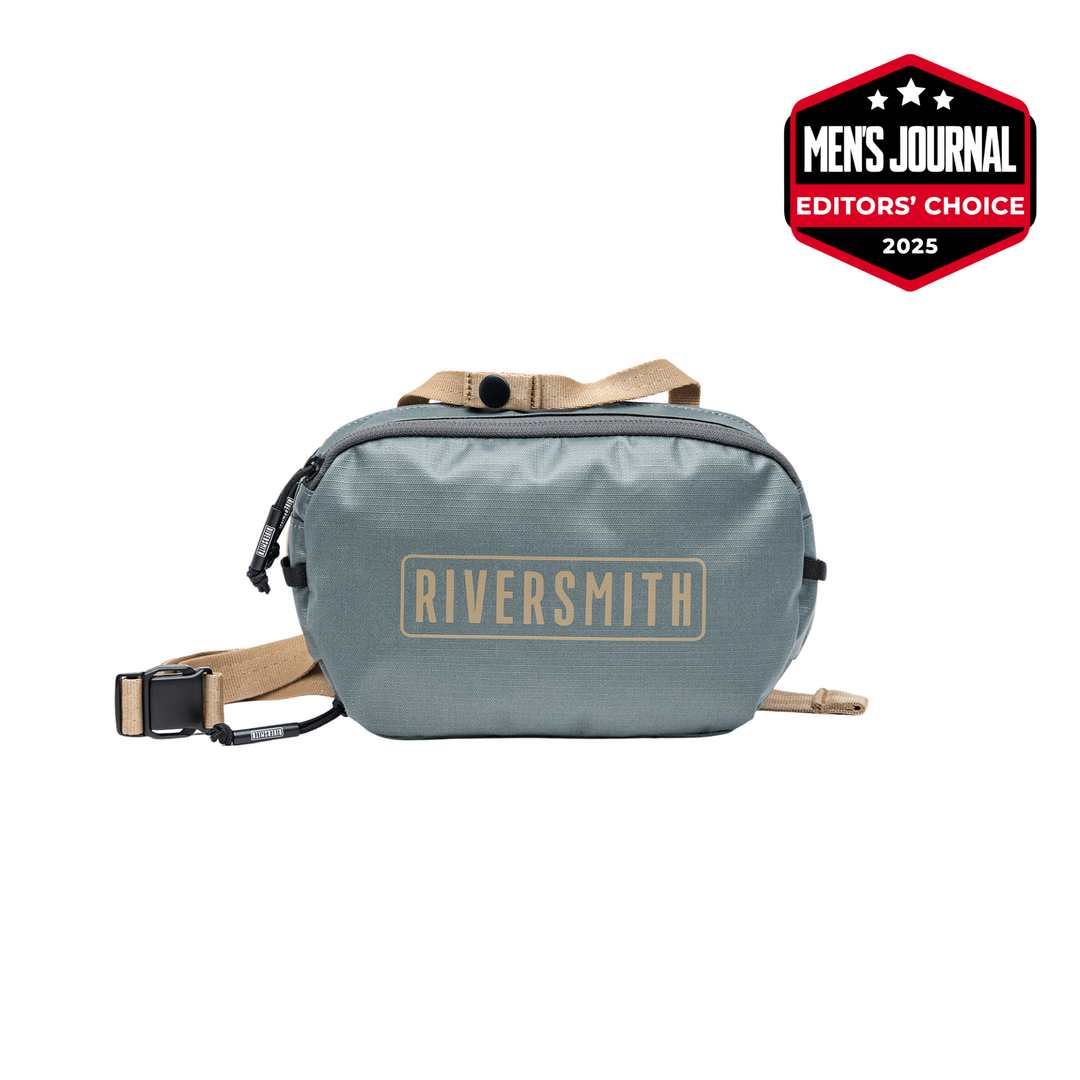A Guide to Fly Fishing in Washington
With the steelhead trout crowned as the state fish of Washington, you can probably guess why we felt the need to write an article on this incredibly iconic state. Some of the best trout fishing in Washington can be found in the rivers we’re about to go all out on.

Known not only for its rainfall but also for its glaciers, rivers, lakes, and coastlines, the state of Washington is every anglers paradise. Diverse and a place that keeps your camera busy, if you get to cast in this part of the country, consider yourself one of the luckiest anglers on Earth.
The Best Fly Fishing Rivers in Washington State
With a state that has 167 distinctly named rivers, making up 70,439 miles of flowing water, it’s truly overwhelming and difficult to narrow down the best of the best. That being said, the Yakima River, the Skagit River, and the Hoh River made the list for the native species you can find swimming beneath their surfaces and the natural beauty these rivers engulf you in. Legendary in size and for the fish they offer, these three rivers are must visits if you are fly fishing in Washington state.
The Yakima River

Named after the indigenous Yakama people, this tributary stretches 214 miles, making it the longest river in all of Washington state. Although it’s technically a tailwater fishery, it’s home to an overwhelming variety of fish species and offers water conditions of all types.
The Yakima River begins in the Stuart Mountain Range (in the central part of the Washington Cascades) before finally draining into the Columbia River. Between its origin and end points, the Yakima carves through the basalt canyons of the valley that were created millions of years ago by the non-active volcanoes in the area.
Fish Species in the Yakima River
Laying their eggs on the river bottom of the Yakima River each year, this river is a hot spot for fall spawning Chinook salmon. Both the Chinook salmon eggs and fry are plentiful during this time of the year, which provides plenty of food for the brown trout, rainbow trout, and cutthroat trout to feast on. This salmon snack allows these trout varieties to grow in tremendous size, creating the most idea of fly fishing scenarios.
These trout are most common to find in the section of the river that flows through the Yakima Canyon. Between the town of Ellensburg, Washington and running south to the town of Yakima, Washington, the Yakima Canyon is a must visit when looking to fish for trout in this tributary. 27 miles of river carving through desert-like hills and staggering basalt cliffs, this corridor of the Yakima dishes up blue ribbon status trout and is accessible via recreation sites all year round.
Fishing the Yakima River
Because the variety of species and the hatches native to the area are so abundant, baiting for the Yakima River is not something to overthink. A large summer stonefly hatch does a great job at bringing the big fish to the surface, making it a common go to bait.
For anglers fishing the Yakima in the early spring, a Blue Winged Olive emerger will match the hatch, and for later winter fishing, use a Skwala Stonefly. For those casting during the fall Chinook salmon spawning season, you can’t go wrong with a wrapped sardine, Marabou jigs, or some salmon eggs.
The Skagit River

An avid fisher doesn’t think about fly fishing in the state of Washington without first thinking of the Skagit River. Known to be one of the largest salmon and steelhead trout fisheries in the state of Washington, the Skagit River is born in the Canadian Cascades of British Columbia and runs 150 miles through the state of Washington before draining into the gorgeous Puget Sound.
It receives several rivers along the way, including the Klesilkwa River, Beaver Creek, Ruby Creek, Sauk River, and Baker River. All of these rivers are known in their own right for world-class fishing and help make the Skagit River the special place that it is.
Fish Species in the Skagit River
Notorious for being the only Washington state tributary to contain five of the seven of the Pacific native salmon species, the sky above the Skagit is often dotted with a convocation of wintering bald eagles feeding on the coho and chum salmon.
The other three native salmon species that populate the Skagit include the chinook, pink, and sockeye. This river also supports a healthy population of giant steelhead and coastal cutthroat trout who all on their own draw anglers from every corner of the world.
Accessing the river via a bank can be pretty difficult, so most commonly, anglers fish the Skagit River by boat. But for impeccable fly water conditions, check out the section running just below the peaks dotting throughout North Cascades National Park where the water is most often crystal clear, broad, and chock full of riffles and runs.
Further southwest of the state, just above the Sauk confluence, the water conditions change up dramatically and can be difficult to fish from. However, a little further below the Sauk confluence as the river approaches the city of Mount Vernon, it opens up with longer stretches of flat, calm water that house all the anadromous species that the Skagit River is famous for.
Fishing the Skagit River
There is not a better river than the Skagit to use a double-handed fly rod for some Spey casting. Although this method evolved in Scotland on the Spey River, it’s as if they created Spey casting for rivers such as the Skagit. A wide, ferocious river, but difficult for anglers to wade out far enough to make room for back casting, Spey casting allows an angler to long cast no matter the river’s position or the wind conditions.
Depending on what fish species you are looking to hook, your bait options will vary. To seek the coho salmon like the bald eagles in the area do, a Vibrax Spinner is the most well known and recognized for its ability to get some bites. With fishing for sockeyes, they really love their salmon eggs and sand shrimp. And for the pink salmon, a Blue Fox Classic Vibrax or Acme Kastmaster lure are the most tried-and-true.
In the event you’re not looking to hook some salmon and are after the giant steelhead instead, have some spinners, spoons, plugs, and crankbaits in your tackle. Although they are not a very aggressive trout, they will bite at one lure more than the other on any day, so arming yourself with a few different lures will ensure a catch takes place.
The Hoh River

If you want to experience all that Washington’s landscape offers in one place, including the Pacific Northwest rainforest, snow-capped mountains, and bountiful wildlife, X marks the spot on the Hoh River. Named after the indigenous Hoh tribe, the river is on the Olympic Peninsula, making up the most northwest part of the state. In this part of Washington, a top-notch camera will be just as vital as your fly rod.
In fact, 25 miles of the Hoh River runs right through the Hoh Rainforest. This rainforest comes to mind when you think of lush, untouched nature, with the floor absolutely covered in moss, ferns, and Sitka spruce trees. All 56 miles of the Hoh’s water comes from the glaciers of Mount Olympus and is known for the winter steelhead run that starts in November and lasts until the last days of January.
Although it’s a much shorter river than the Yakima and Skagit, it’s divided into three sections and absorbs several tributaries along the way. The Mount Tom Glacier feeds the first section, known as the North Fork,. The second section, downstream from the North Fork, is known as the Middle Fork. Finally, the third section of the Hoh is known as the South Fork, which gets most of its water from the runoff of Humes Glacier.
Fish Species in the Hoh River
Like the Yakima and Skagit, the Hoh River is known for its major native steelhead runs. The Washington Department of Fish and Wildlife and the Hoh Indian Tribe work together on steelhead hatcheries in order to provide plenty of stock for the river. Because their run starts in November and goes until late January, this is the most opportune time to bait for one. However, you won’t find a problem catching them at any point in their year, as they’ve been known to hang around all four seasons.
For salmon fishing, the Hoh is the perfect place to attract some huge salmonid fish; whether it be the chinook, coho, sockeye, the Hoh has some sizable champions in its waters! Although the chinook salmon are a little less common than the other salmon, they can reach over 50 pounds in weight, hence their nickname “king salmon.” To take a chance at one of these big guys, it’s recommended that you try during fall.
In all three sections of the Hoh, a drift boat is the best way to fish and they’ve made it easy to do so; throughout the entire river, boat ramps can be found. The South Fork of the river is much bigger and slower than the North Fork of the Hoh, making it the perfect place for drift boat salmon and steelhead fishing. However, because this part of the river is such a draw for anglers, tourists, and locals alike, or if drifting just isn’t in the cards, the North Fork can provide excellent fishing with much fewer people out and about.
Fishing the Hoh River
For catching these native steelheads, a tackle full of roe, worms, beads, and flies is ideal. If you know when and how to use these baits, as well as what size and colors are working, you won’t have a hard time finding steelhead bites. Roe is the most widely used bait, but the steelhead making up the Hoh may not have an appetite for roe that day, so it’s best to have other bait on hand. If you’re wanting to work some worms, both plastic and real worms will do. A small bead that imitates a steelhead or salmon egg is sometimes exactly what the steelhead is craving and works great.
For those of you who are going to take a whack at a 50 pound “king”/chinook salmon in the fall, use prawns, herring, or, as mentioned earlier, some roe. What’s great about using roe is their bright color makes them easy to spot in the water and they are loaded with the pheromones of female fish, which will surely attract these giants.
If you struggle to get the roe to stick to your hook, just stick to a cut of herring; these are a species that king salmon are very familiar with and easily work up an appetite for. It’s important to note that you’ll only want to try out prawn as a bait if you’re fishing on those hotter fall days because this type of prey isn’t as great in numbers during colder days, thus you might confuse and deter your fish.
Fly Fishing Seattle
Although the three tributaries mentioned above are going to be a longer drive from the city of Seattle, you may need some suitable destinations that aren’t too far away from Rain City. Luckily, there are plenty of rivers that are within Seattle’s reach, all of which will suit your needs, and are guaranteed to give you a great time!
The Stillaguamish River

Known as “The Stilly” by the locals, the Stillaguamish River is about an hour’s drive north of Seattle and is fed by more Cascade runoffs. Known wildly for its salmon runs, different salmonid species use the Stillaguamish River for spawning grounds. You’ll also find some trout varieties here too, including the steelhead, sea-run cutthroat, and the bull trout. 45 miles of the 67 mile long tributary, known as the North Fork, is designated as a fly fishing only area, the first of its kind in the country.
The Skykomish River

About a 45 minute drive inland and to the northeast of Seattle, the Skykomish River has excellent wading access to ascending sea-run fish near the town of Monroe, Washington. Similar to the other rivers mentioned, the Skykomish has plenty of steelhead trout, sea-run cutthroats, coho salmon, chum salmon, and even pink salmon make a presence every other year. Beyond the town of Monroe, heading towards Sultan, Washington and downstream from the mouth, the valley really expands, and the Skykomish slows down a lot compared to the rest of the river.
The Green River

The Stillaguamish and Skykomish River are excellent choices for anglers who have to stay near and dear to the Seattle area. But there is still one spot worth mentioning that flows right through the urban landscape of Seattle; The Green River. Although the last section of the Green is dotted with shipyards and industrial buildings, deep canyons and breathtaking forests surround the headwaters in the Cascade Mountains around Stampede Pass before flatting out as it approaches the coast. Because any sea-runs on the Green River have to pass through here in order to reach the ocean, you’ll be surprised by just how many bites you get.
Fly Fish in Washington State
The state that sports the most glaciers in the United States, home to 12,000 wild horses near the Yakima Reservation, and the only state to be named after a US president in order to pay full homage to its undoubted natural beauty, every angler must make it a point to fly fish in Washington state. The overwhelming amount of tributaries that the state of Washington offers to anglers, chock full of sea-run salmon and trout, makes every angler who's visited Washington before believe that it’s as if the state had begged them to come and fish her waters. Make your next adventure a fly fishing trip to Washington state; you won’t be able to thank yourself enough!


